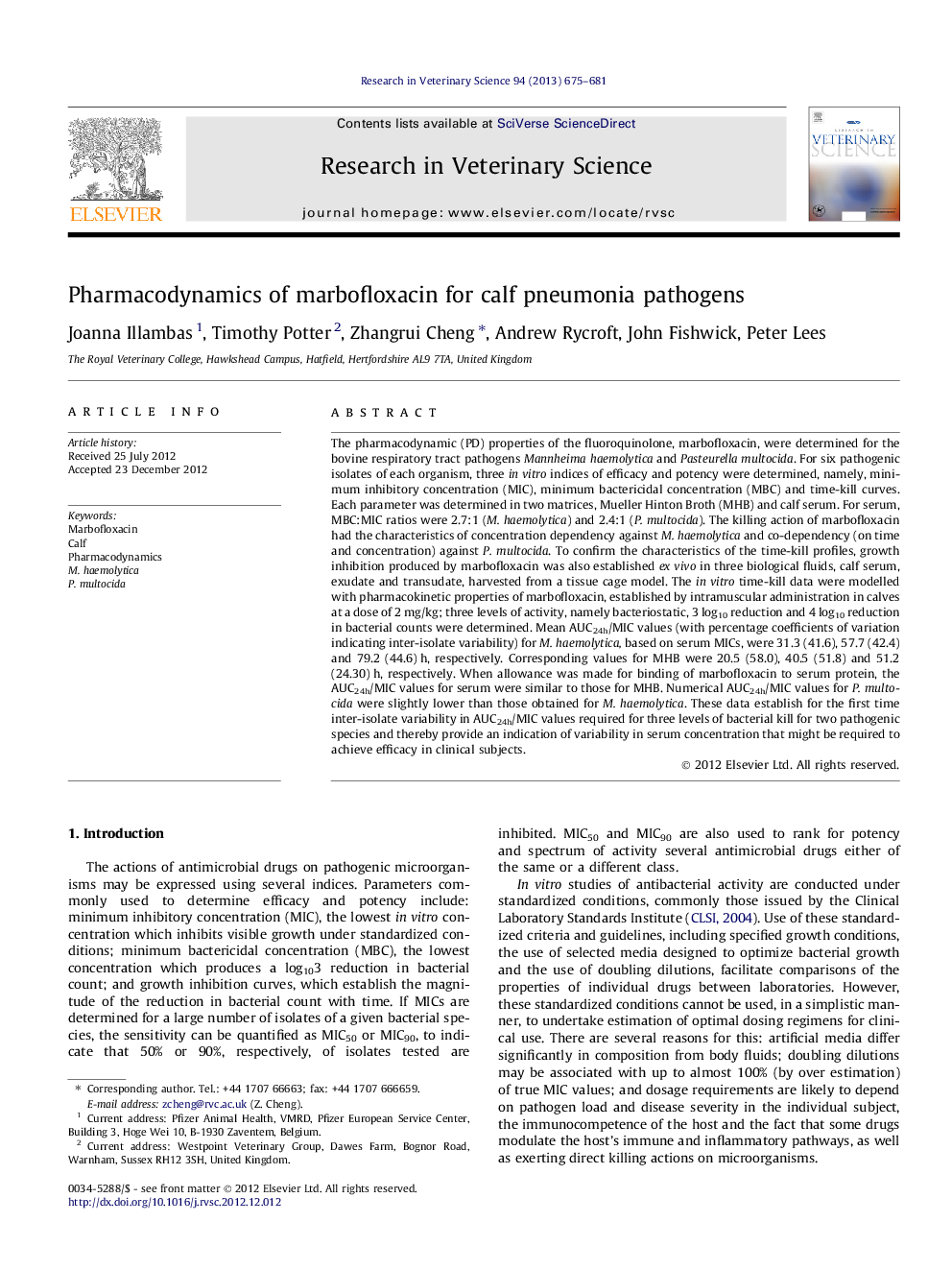| Article ID | Journal | Published Year | Pages | File Type |
|---|---|---|---|---|
| 5794961 | Research in Veterinary Science | 2013 | 7 Pages |
The pharmacodynamic (PD) properties of the fluoroquinolone, marbofloxacin, were determined for the bovine respiratory tract pathogens Mannheima haemolytica and Pasteurella multocida. For six pathogenic isolates of each organism, three in vitro indices of efficacy and potency were determined, namely, minimum inhibitory concentration (MIC), minimum bactericidal concentration (MBC) and time-kill curves. Each parameter was determined in two matrices, Mueller Hinton Broth (MHB) and calf serum. For serum, MBC:MIC ratios were 2.7:1 (M. haemolytica) and 2.4:1 (P. multocida). The killing action of marbofloxacin had the characteristics of concentration dependency against M. haemolytica and co-dependency (on time and concentration) against P. multocida. To confirm the characteristics of the time-kill profiles, growth inhibition produced by marbofloxacin was also established ex vivo in three biological fluids, calf serum, exudate and transudate, harvested from a tissue cage model. The in vitro time-kill data were modelled with pharmacokinetic properties of marbofloxacin, established by intramuscular administration in calves at a dose of 2Â mg/kg; three levels of activity, namely bacteriostatic, 3 log10 reduction and 4 log10 reduction in bacterial counts were determined. Mean AUC24h/MIC values (with percentage coefficients of variation indicating inter-isolate variability) for M. haemolytica, based on serum MICs, were 31.3 (41.6), 57.7 (42.4) and 79.2 (44.6)Â h, respectively. Corresponding values for MHB were 20.5 (58.0), 40.5 (51.8) and 51.2 (24.30)Â h, respectively. When allowance was made for binding of marbofloxacin to serum protein, the AUC24h/MIC values for serum were similar to those for MHB. Numerical AUC24h/MIC values for P. multocida were slightly lower than those obtained for M. haemolytica. These data establish for the first time inter-isolate variability in AUC24h/MIC values required for three levels of bacterial kill for two pathogenic species and thereby provide an indication of variability in serum concentration that might be required to achieve efficacy in clinical subjects.
